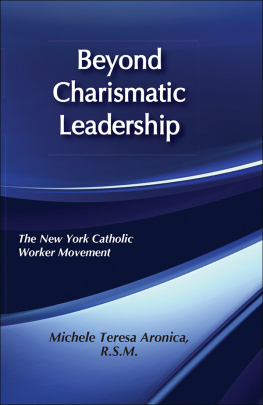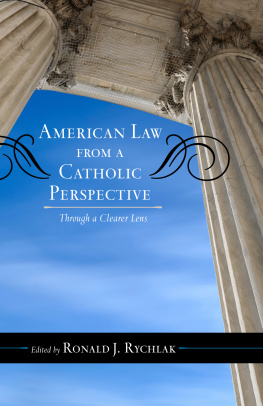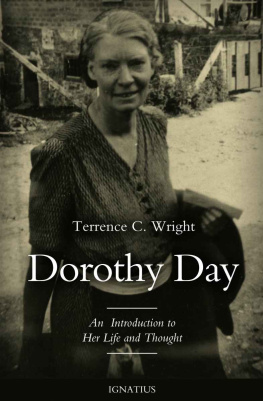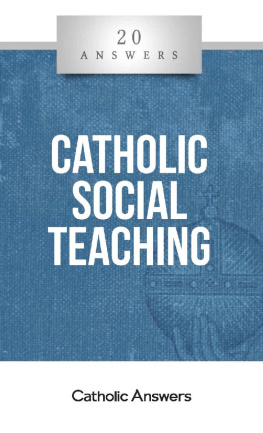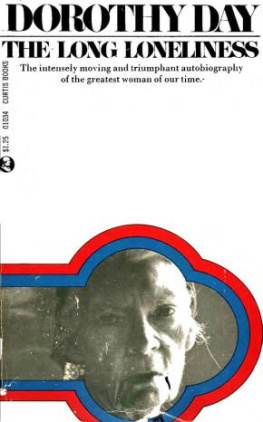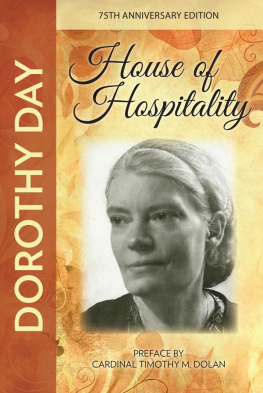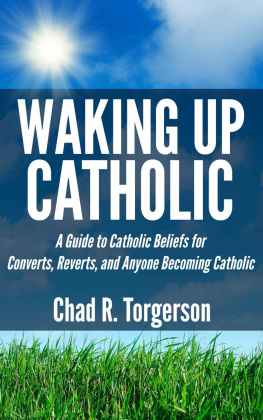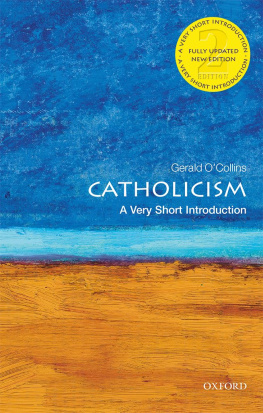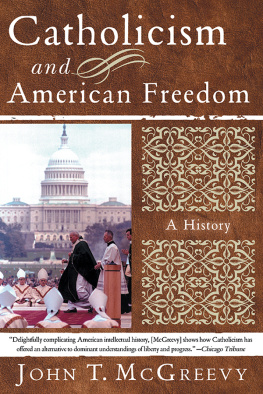BEYOND CHARISMATIC LEADERSHIP
BEYOND CHARISMATIC LEADERSHIP
The New York Catholic Worker Movement
Michele Teresa Aronica, R.S.M.
First published 1987 by Transaction Publishers
Published 2017 by Routledge
2 Park Square, Milton Park, Abingdon, Oxon OX14 4RN
711 Third Avenue, New York, NY 10017, USA
Routledge is an imprint of the Taylor & Francis Group, an informa business
All rights reserved. No part of this book may be reprinted or reproduced or utilised in any form or by any electronic, mechanical, or other means, now known or hereafter invented, including photocopying and recording, or in any information storage or retrieval system, without permission in writing from the publishers.
Notice:
Product or corporate names may be trademarks or registered trademarks, and are used only for identification and explanation without intent to infringe.
Library of Congress Catalog Number: 87-10163
Library of Congress Cataloging in Publication Data
Aronica, Michele Teresa.
Beyond charismatic leadership.
Bibliography: p.
1. Catholic Worker Movement. 2. Maurin, Peter.
3. Day, Dorothy, 1897- . I. Title.
BX810.C393A76 1987 267.1827471 87-10163
ISBN 0-88738-168-5
ISBN 13: 978-0-88738-168-3 (hbk)
Beyond Charismatic Leadership
In completing this work, it is proper to express deep gratitude to many persons; unfortunately, too many to mention individually.
To Jeanne Guillemin, for her continual support and encouragement over years, from the time the idea was formulated to the completion of this study. To Seymour Leventman and David Karp, for their constructive evaluations during the writing phase of this research.
To Sister Joyce Mahany for generously making technical assistance available to me throughout the course of this work, and for teaching me to use the word processing system. To Susan McAuliffe, who was always accommodating and diligent in meeting any typing deadlines as well as gracious in making any required changes in the text. To Sister Mary Flavia, for her tireless efforts and encouragement while meticulously proofreading this manuscript. To Cherie Cayer, a work study student who cooperated faithfully with every request for copying, collating and general assistance.
To the personnel at Transaction, especially Irving Louis Horowitz, Scott Bramson, Alex Fundock, and Kimberly Jesuele for their particular contributions which improved the composition of this study.
To the members of the Catholic Worker and the countless street people I met from whom a great deal was learned though not always recorded in this study, but rather committed to heart.
To the Sisters with whom I lived while visiting the Worker facilities, for providing me with much more than hospitality.
To Sister Sylvia Pelletier, a friend, whose struggle with cancer provided me with the determination necessary to continue this research during those times of doubt and frustration.
And, what would I have done without the prayerful support, concern and continued encouragement from my Sisters in community, family and friends?
I gratefully acknowledge Harper and Row Publishers, Inc., for permission to utilize selected excerpts from The Long Loneliness, written by Dorothy Day (1952). These passages are contained in of this work.
Contents
The Catholic Worker movement was created by Peter Maurin and Dorothy Day in New York, in May 1933. It was inaugurated with the publication of The Catholic Worker, a newspaper intended to print the ideas of Maurin, using the journalistic style of Day. By mid-summer, a New York apartment on 15th Street had become a house of hospitality for men. Later, in 1934, a house opened for women, also under the Catholic Worker auspices. It is at this point that the Catholic Worker changed from being just a newspaper into being the voice of a social movement. The current study examines the movement in detail along the following lines:
What social factors prompted the Catholic Worker Movement to come into being?
How has the Movement developed and adapted while simultaneously responding to the needs of changes in American society?
What are the adaptation processes in which the Movement is presently involved since the death of its founders?
A variety of primary and secondary methodological techniques were utilized to carry out this investigation. Primary sources of information-gathering included a review of materials from Marquette University archives, interviews with former Catholic Worker members, as well as contemporary researchers and authors, and the use of field methods at the New York Catholic Worker facilities over a two and a half month period. Sources of acquiring secondary data included a review of pertinent theoretical literature which provided a framework in which to analyze the Worker; an examination of historical information which described the Catholic Worker Movements development, and an examination of the Ph.D. dissertations which investigated the movement from a variety of perspectives. A further detailed explanation of the methodology by which the research has been collected is located in the Appendix of this study. The scope of this project is primarily focused on how the Catholic Worker movement developed in the New York area, since it is here that Maurin and Day both lived and directly influenced the internal operations of these facilities. A chronology of the organizations changing locations will be given only as it serves to increase understanding of the movements philosophy, values, norms, means and goals.
Throughout its fifty-year history, the Catholic Worker Movement has sought social change by the implementation of the two facts of Christian ideology. The Members of the movement have worked to change the American belief in individualistic materialism through service to the poor, and they have worked for pacifist alternatives to world conflict. Under the leadership of founders Peter Maurin and Dorothy Day, the Catholic Worker Movement has addressed the social problems of poverty and war by an affirmation of the Christian Community as a social and political force.
The Catholic Worker Movement has not only been enabled to survive, but has continued its service both in its ministry to the poor and its position and activities on war and armaments. In order to understand how its existence has been maintained, a discussion of pertinent literature on topics such as social movements, leadership and service communes is included in .
contains biographical information about both Maurin and Day. These sketches focus on only those aspects of their lives which influenced their values, developed their philosophy and provided the motivational bases which prompted the development and maintenance of the Catholic Worker.
presents the ideology enunciated by Maurin and Day which gave the Catholic Worker Movement its reason for existence, its historical development of the publication of the first edition of the Catholic Worker, the initiation of the clarification of thought seminars, the beginning of the first house of hospitality and, finally, the founding of farming communes. The development of the Worker lent insight as to Maurin and Days view of organization. In short, there were few structures which were clearly delineated or rigidly adhered to, and oftentimes, these structures were in a process of change. These aspects have become standard traits of this group throughout its fifty-one year history. In three periods in the Catholic Workers history, 1940-1945, 1950-1953, and 1960-1972, there was American involvement in war: first World War II, next the Korean War, and finally the Vietnam War.

